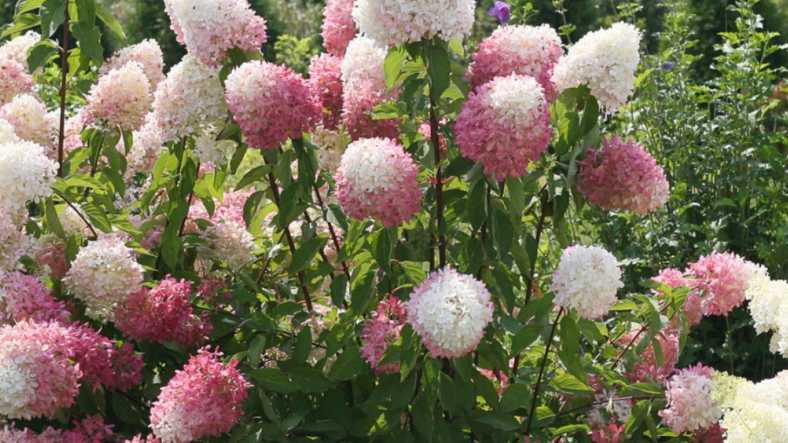Hydrangea Paniculata Zinfin Doll (Proven Winners ColorChoice Shrubs) University of New Hampshire (UNH) researchers have launched a new study that will evaluate plants from three cold-hardy hydrangea species for cut flower and landscape use. “The floriculture and bedding plant industry is a top agricultural commodity in New Hampshire, and the number of farms producing field-grown cut flowers has increased by a staggering 60% from 2007 to 2017,” says Kaitlyn Orde, a Research Associate who will oversee the project at the Woodman Horticultural Research Farm, a facility of the New Hampshire Agricultural Experiment Station . “This dramatic increase suggests cut flowers are an increasingly important horticultural crop in the state and illustrates that consumer demand is strong for regionally grown flowers. “However, no studies have been conducted to evaluate these species in the Northeast, making providing information to the commercial farming community on characteristics and performance nearly impossible,” says Orde, who will conduct the research with experiment station researcher Becky Sideman, Professor of Sustainable Agriculture and Food Systems and UNH Cooperative Extension Professor and specialist in sustainable horticulture production, and Cathy Neal, retired experiment researcher and Extension Landscape Horticulture Specialist. Hydrangea is widely recognized for its ubiquitous use as a landscape shrub across Cape Cod and Nantucket and as a cut flower by florists. However, this species is only reliably winter hardy through USDA Zone 6, which is south of most of Northern New England, and injury in winter to buds is common when the species is grown in colder areas, making establishing it in New Hampshire risky. There are many other species of hydrangea, including species that are more cold hardy than the big leaf type. Notable hydrangea species are H. paniculata (“panicle”), H. quercifolia (“oakleaf”), and H. arborescens (“smooth”), which are believed to be hardy through Zone 4 and Zone 5, respectively, making them obvious choices for growing in New Hampshire. In the three-year project, researchers will evaluate 14 hydrangea cultivars from the cold-hardy panicle, oakleaf, and smooth species. They will measure several factors to determine cultivar suitability for both landscape and cut flower use, including winter survival, […]






